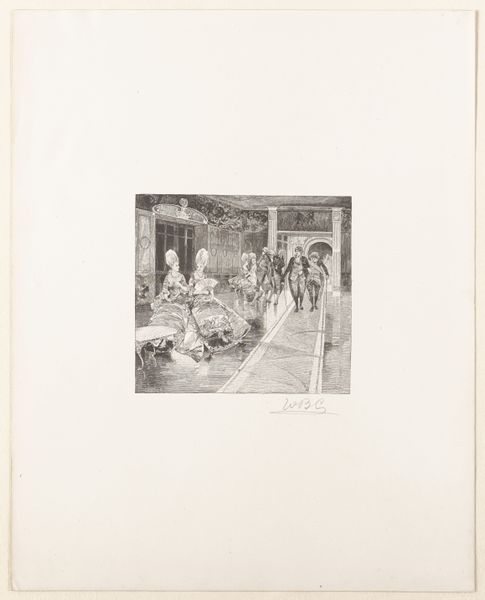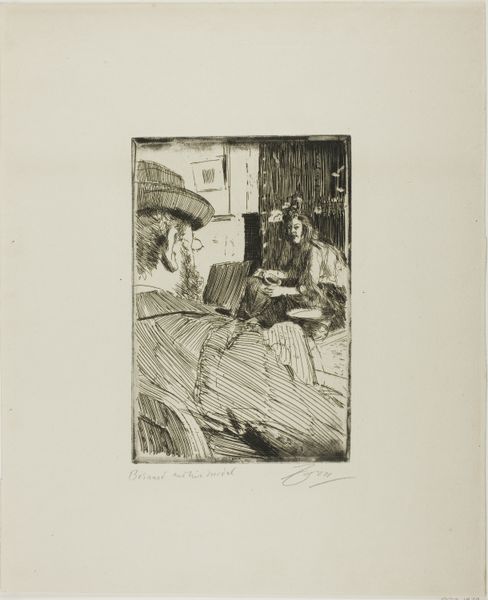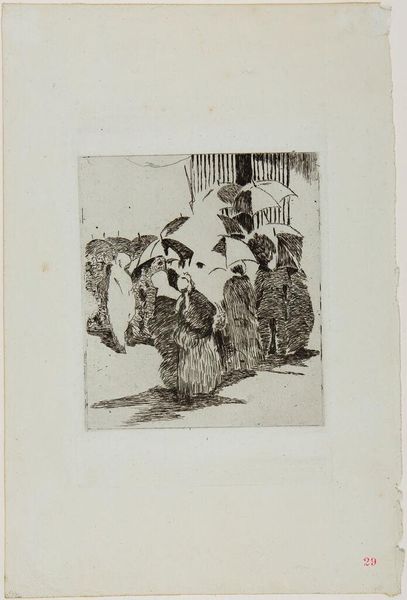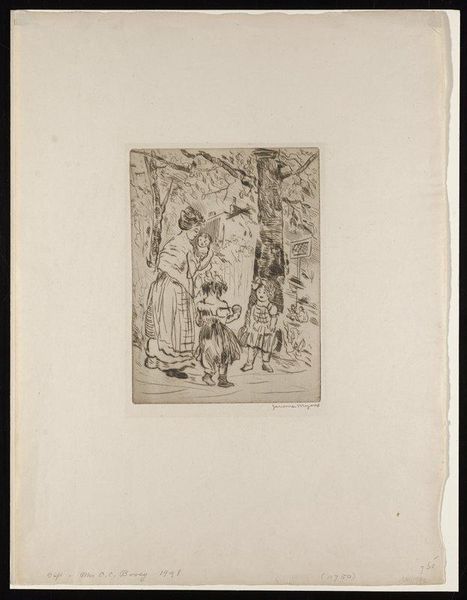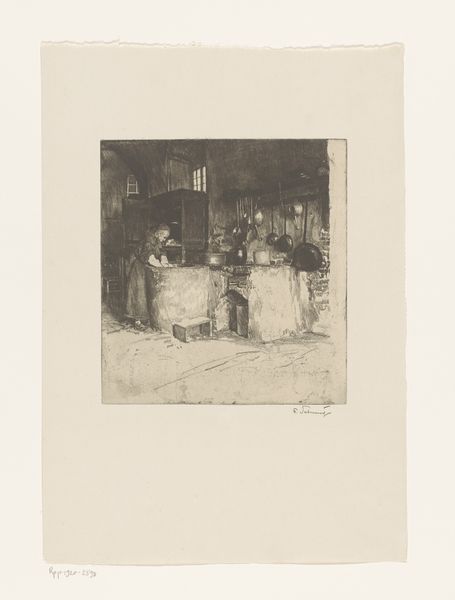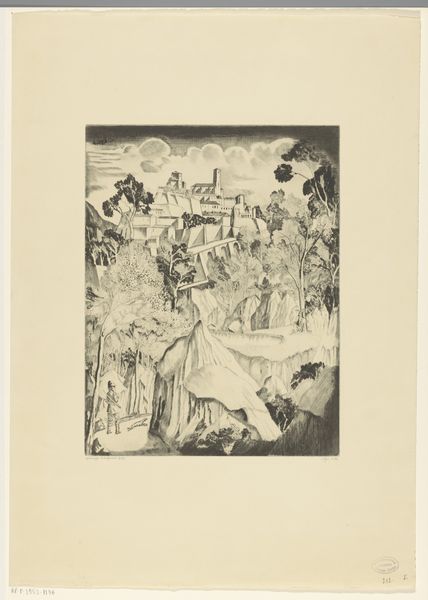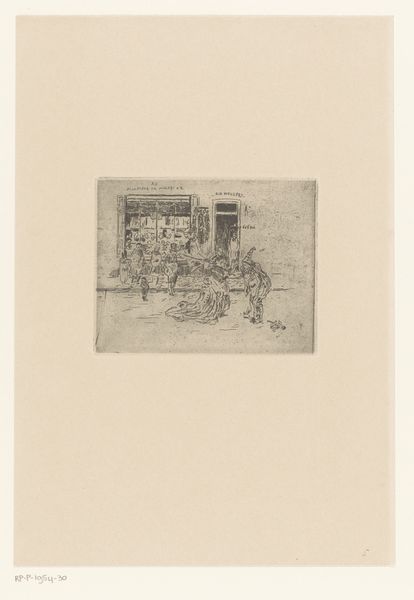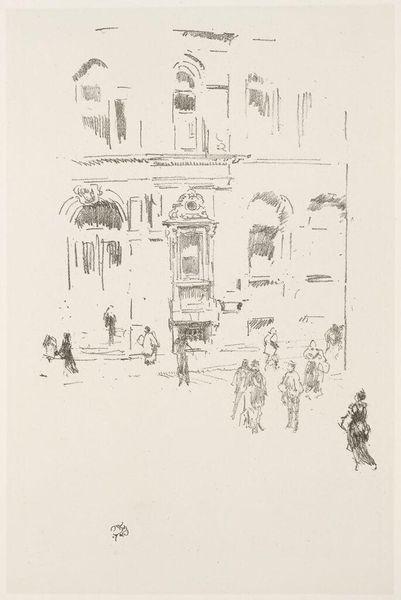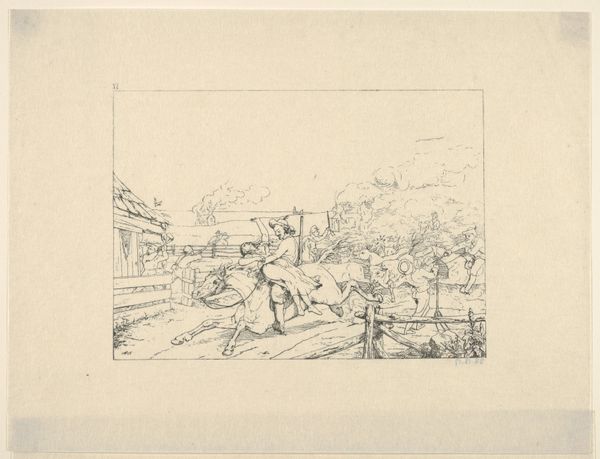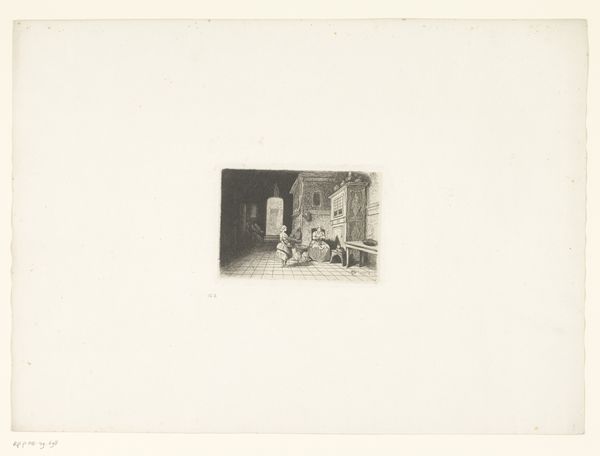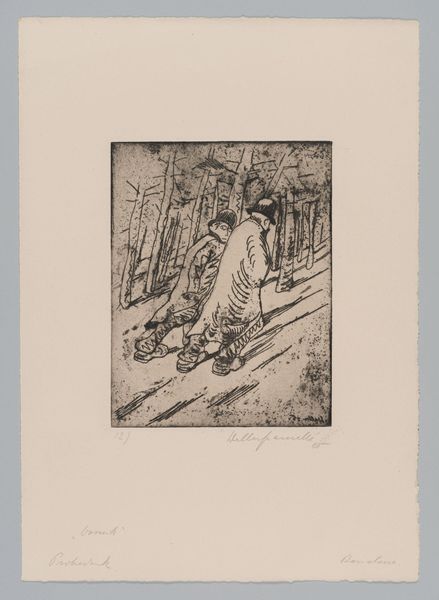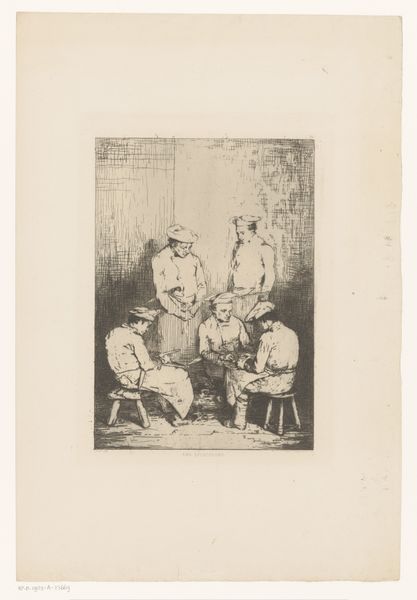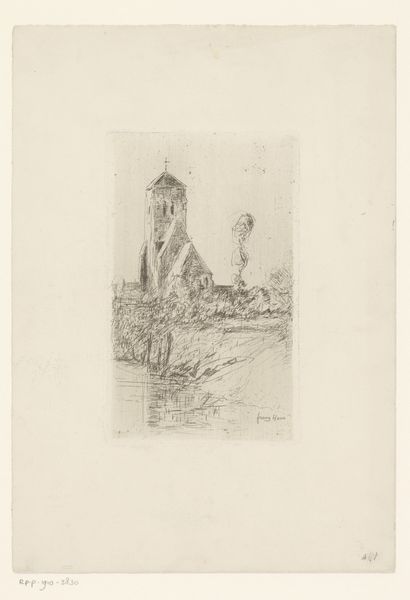
drawing, print, etching, paper
#
drawing
# print
#
impressionism
#
etching
#
paper
#
cityscape
#
genre-painting
Dimensions: 165 × 98 mm (plate); 313 × 225 mm (sheet)
Copyright: Public Domain
Editor: This is Norbert Goeneutte's "Avenue Trudaine on a Rainy Day," an etching from 1875. It really captures the gloominess of a wet city street. What strikes you about it? Curator: It speaks volumes about the societal positioning embedded within Impressionism. Notice how Goeneutte frames the bourgeois figures. He portrays the city not as a romantic escape, but as a space where class and gender performances are constantly negotiated. The woman in the elaborate dress, the top-hatted man – they're enacting their roles. What about the social conditions that create these roles? Editor: So, you’re saying it’s not just a scene, but a commentary? Curator: Absolutely! Look at the lone figure with what seems to be an advertisement sign, or some kind of message that needs dissemination, set against the backdrop of Parisian affluence. Who gets to participate, and who's left to navigate the margins of that glittering world? This also invites thinking about what it means for marginalized populations to simply move through spaces that weren’t really designed for them. Editor: That's fascinating. I was focusing on the Impressionistic technique, the fleeting moment. Curator: And that's valid. But remember, the "fleeting moment" always impacts certain individuals, certain bodies, more severely. How does weather affect that era’s privileged versus under-privileged? Considering such work from intersectional viewpoints might change one’s overall art historical perspectives and contextual views on identity itself. Editor: It's making me rethink Impressionism. I need to explore the genre further! Curator: It can transform our comprehension. Analyzing its undercurrents of social commentary – through a lens of gender, class, and race – enhances art historical study and our capacity to observe power dynamics with historical and contemporary awareness.
Comments
No comments
Be the first to comment and join the conversation on the ultimate creative platform.
